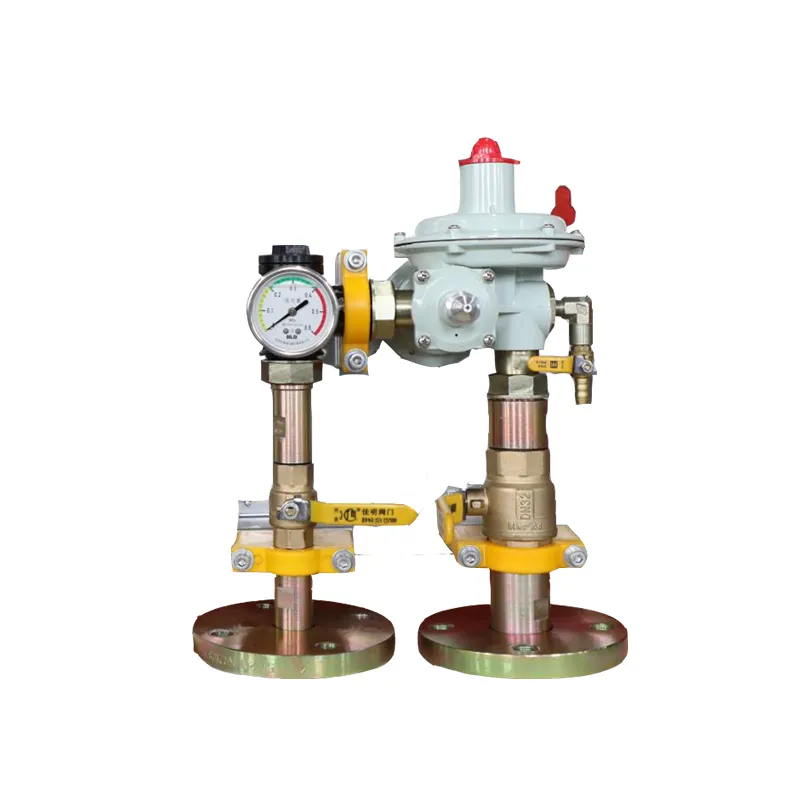
Nov . 18, 2024 19:11
Back to list
صمام التنفيس
Understanding the Pressure Relief Valve Essential for Safety and Efficiency
A pressure relief valve (PRV) is an essential component in various industrial applications, ensuring safety and efficiency in systems that involve pressurized fluids or gases. Its primary function is to prevent excess pressure build-up that can lead to catastrophic failures, equipment damage, or even personal injury. This article will explore the workings, significance, and applications of pressure relief valves, providing insights into their crucial role in modern engineering.
.
The significance of pressure relief valves cannot be overstated. In industries such as oil and gas, chemical manufacturing, and power generation, the repercussions of pressure failures can be dire. A malfunctioning valve may lead to explosions, fires, or serious environmental hazards. Thus, regulatory standards often mandate the installation of PRVs in systems where pressure regulation is critical. Their presence not only ensures compliance with safety regulations but also enhances operational reliability.
صمام التنفيس

Pressure relief valves come in various types, each designed for specific applications. The most common types include spring-loaded valves, pilot-operated valves, and thermal relief valves. Spring-loaded valves are the simplest and most widely used; they are available in various materials and configurations to suit different system requirements. Pilot-operated valves function based on system pressure and are used in high-capacity applications, providing more precise control at higher pressures. Thermal relief valves, on the other hand, are designed to relieve pressure caused by thermal expansion in liquid systems, thereby preventing potential damage.
Furthermore, the maintenance of pressure relief valves is critical for ensuring their effectiveness. Regular inspections and testing are necessary to verify their functionality and to check for any signs of wear or corrosion. Neglecting maintenance can compromise the valve's integrity, leading to failures at critical moments. Operators should adopt a proactive maintenance strategy, which includes routine checks according to industry guidelines and manufacturer recommendations.
As industries continue to evolve with advancements in technology, pressure relief valves are also adapting. Modern designs incorporate smart technology that allows for real-time monitoring and diagnostics, providing operators with alerts when the system approaches unsafe pressure levels. This capability not only improves safety but also contributes to increased efficiency by allowing for timely interventions.
In conclusion, pressure relief valves are vital safety devices in any system involving pressurized fluids or gases. Their ability to automatically regulate pressure protects against potential hazards, making them indispensable in various industries. As technology advances, the future of PRVs looks promising, with innovations that focus on enhanced safety features and operational efficiency. For engineers, operators, and industry leaders, prioritizing the maintenance and upgrading of these systems will ensure that both personnel and equipment remain safe in high-pressure environments.
Latest news
-
Safety Valve Spring-Loaded Design Overpressure ProtectionNewsJul.25,2025
-
Precision Voltage Regulator AC5 Accuracy Grade PerformanceNewsJul.25,2025
-
Natural Gas Pressure Regulating Skid Industrial Pipeline ApplicationsNewsJul.25,2025
-
Natural Gas Filter Stainless Steel Mesh Element DesignNewsJul.25,2025
-
Gas Pressure Regulator Valve Direct-Acting Spring-Loaded DesignNewsJul.25,2025
-
Decompression Equipment Multi-Stage Heat Exchange System DesignNewsJul.25,2025

